But… was the Milk Road not there?
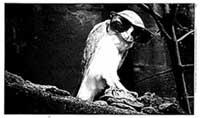
The human way of life adapts to the rhythm of Nature, for example, to the rhythms of day and night. The day is used for work, study, etc., while the night is to rest, to lie down and, among other things, to observe the Universe. XX. This rhythm broke approximately in the early 20th century. Industrialization changed society and the way of life. Human activities are no longer limited to the kingdom of the Sun. The streets have been filled with light, both roads, houses, vehicles, all kinds of buildings… They say it is better for the comfort and safety of all.
Any human activity in Nature produces changes. This situation is known in most cases as pollution. When talking about pollution, it represents something dirty, of bad appearance, that divides and deteriorates the water, the earth or the atmosphere. With savage industrialization and population growth new types of pollution have been created. Its consequences are not as obvious as those mentioned above. Noise and light pollution are like this, it is detected that the focus of pollution is open, but it disappears when the tap is closed, without supposedly other consequences. For example, noise pollution in any street is evident during the operation of the source of pollution -vehicles passing through it, work being done, public interventions…-; at the end of the activity, pollution ends. The same goes for light pollution.
Misuse of artificial light
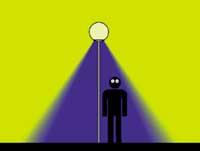
Light pollution is a very broad concept, but in general it corresponds to the artificial light that spreads at night. It is generated when it is not used properly and generates discomfort. Among the problems derived from light pollution is the light intrusion, that is, the light that also affects the outdoor area to which it must solve. With lamps of poor quality or with few lighting designs, light inserts are frequent.
An example of this type of lighting that hits more than on the street. Brightness is also one of the main problems of light pollution. For purposes of definition, one can speak of the excess luminance produced by a light source when such luminance prevents or decreases vision. When you forget to remove the long lights to the vehicle that comes from front, the decrease in vision that occurs in a short instant is an example of brightness. Another of the most remarkable problems posed by light pollution is the brightness of the urban and urban sky. This phenomenon is due to the light that flees from towns and cities. The escaped light is dispersed when it reaches the atmosphere, thus increasing the levels of natural dispersion in the sky. In Madrid, for example, the light pollution layer is 20 kilometers high and 25 kilometers in diameter, which is seen 300 kilometers. Astronomy is the most influential and, according to experts, about half of the celestial brightness is due to urban and local lighting.
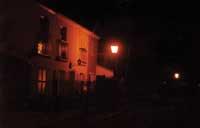
Light pollution not only affects night or darkness, but also other types of discomfort or problems. The increase in electricity consumption, the increase in energy generation processes and consequently of CO2 emissions, the accumulation of waste from mercury lamps, the influence on the life habits of animals, especially birds in towns and cities, and the alteration of the biological rhythm of humans are a consequence of light pollution.
The sources of light pollution can be several, but the most unfavorable - by number - is the public lighting, better said, the incorrect or poor public lighting. Luminaires without any screen, in the form of a balloon, buildings embellishment lights, poorly designed advertising lights, lamps, among others, are the main sources of light pollution.
Influence on astronomy
Although concerns about this issue are becoming increasingly widespread, at the moment light pollution does not dislike society too much. A part of society, however, is very concerned, made up of astronomy fans.
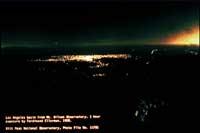
Astronomers and fans are more interested in observing stars, galaxies, etc. than ever. Thanks to the latest generation telescopes equipped with electronic detectors, when the state of the sky is good, you can already look very far and see what is there.
For example, with a four-metre electronic telescope, you can see 250 million times more than the farthest visual star. This means that a normal lit candle, at night and 100,000 kilometers the man could see its light. In these observation sessions we can see galaxies that are already 10 billion light-years away and that, being finite the speed of light, are seen as with a third of the current age of the Universe. From these measures, astronomers can not only determine the origin and structure of the Universe, but also deduce how the future can be
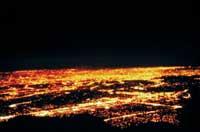
... However, in order to correctly make observations, in addition to giant telescopes capable of capturing as much light, scientists need as much dark sky as possible. Therefore, it is important to minimize the luminosity of the sky. The following table can help to understand the state of the instruments that work the observation of the sky and the confrontation between light pollution.
Loss of resolution of the 8 meter diameter telescope according to luminosity
Luminosity of the sky | Equivalent mirror diameter in meters | Percentage of mirror use of 8 meters |
1,00 | 8.00 | 100% |
1,10 | 7.63 | 91% |
1,20 | 7.30 | 83% |
1.25 | 7.16 | 80% |
1,50 | 6.53 | 67% |
2,00 | 5.66% | 50% |
3,00 | 4.62 | 33% |
5,00 | 3.58% | 20% |
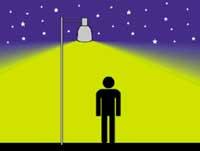
Data from the table above indicate that, despite low light pollution, the observation capacity of telescopes is very important. The starting point of the table, the luminosity of the 1.00 sky, would be the luminosity of the sky, so a value of 1.10 would mean an increase of 10% of the luminosity. For example, when the luminosity of the sky doubles -2,00- 8 meters the telescope would become a 5.66 meter telescope. Despite the calculations, the examples of reality are also illustrative. In 1940 a 5-metre telescope was installed on Mount Palomar in California. Until 1970 it was the largest telescope in the world. The current light pollution in the cities of San Diego and Los Angeles has made the effectiveness of this telescope only half that it had 60 years ago.
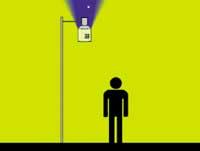
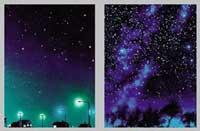
How to deal with it? Compared to others, problems arising from light pollution do not seem extraordinary. However, the simplest solution - sending light to the ground and not to the sky - will cost you a lot to open the way. In fact, as with most environmental problems, the solution must be global. Of course, this does not mean that everyone from home and around you cannot take action, as there are. For example, having home lights off when not needed or using energy-saving lamps. Municipalities can also do something: reduce the lighting of buildings or monuments, use energy lamps more cost-effective, tend to luminaires that illuminate the floor, use screens capable of reducing brightness and consider in planning the concept of light pollution.
Now yes, as you promise at the entrance, get up from where you are, get out of the calamity of your house—if it's a foggy night—and check out the sky. If you are lucky, the show is fine.
Honest, evil and evil
Sincere:
- More effective, cheaper.
- Emits the light downwards and sideways where necessary.
- Provides balanced lighting.
- Does not send light to adjacent areas, no light input is allowed.
- It does not prevent the natural illumination of the sky.
Bad:
- A lot of energy is wasted.
- Direct the light to the sky.
- The lighting is weak and the light input is evident.
- Facade lighting.
Related products
- It makes little light, except for the birds' breasts.
- It does not guarantee citizen security, as it generates shadows.
- The focus, by illuminating the entire street, can cause problems in the circulation of vehicles.
- From an aesthetic point of view, tastes are tastes, ugly.
Published in the supplement Natura de Gara
Buletina
Bidali zure helbide elektronikoa eta jaso asteroko buletina zure sarrera-ontzian











